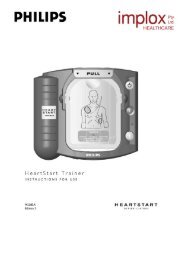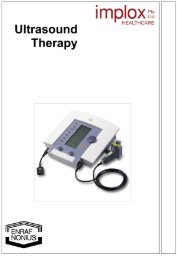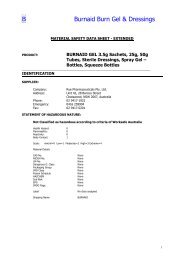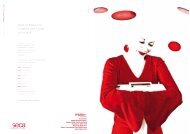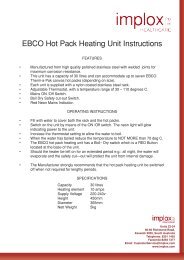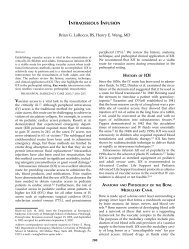Low and medium Frequency Electrotherapy - Implox
Low and medium Frequency Electrotherapy - Implox
Low and medium Frequency Electrotherapy - Implox
You also want an ePaper? Increase the reach of your titles
YUMPU automatically turns print PDFs into web optimized ePapers that Google loves.
3.4 Medium-frequency currents<br />
Although many different types of <strong>medium</strong>-frequency current may be used, the best known application is interferential<br />
therapy. This most frequently used form of <strong>medium</strong>-frequency current will therefore be considered in the following<br />
section. The specific application form known as ‘Russian Stimulation’ will be dealt with in Chapter 4.<br />
3.4.1 Description of the current forms<br />
From the investigations of Lullies it is clear that the thick nerve fibres can be selectively stimulated using <strong>medium</strong>frequency<br />
currents. However, in comparison with low-frequency current types, there is a difference in the way in<br />
which the nerve fibres are depolarized. Due to the higher frequency of the <strong>medium</strong>-frequency current, not every<br />
(alternating current) pulse will result in depolarization of the nerve fibre. Depolarization of the nerve fibre is the result<br />
of the summation principle (Gildemeister effect).<br />
Fig. 10.<br />
An action potential arising as the result of a <strong>medium</strong>-frequency current (A) <strong>and</strong> a direct current pulse (B).<br />
Fig 11.<br />
A. With a <strong>medium</strong>-frequency current an action potential only arises after a certain number of periods (summation<br />
principle).<br />
B. With a direct-current pulse of the same duration an action potential arises at a significantly lower amplitude.<br />
According to Lullies, continued stimulation with a <strong>medium</strong>-frequency alternating current can result in a situation in<br />
which the nerve fibre ceases to react to the current (Wedensky inhibition) or the motor end plate becomes fatigued<br />
<strong>and</strong> may fail to transmit the stimulus.<br />
To prevent this, it is necessary to interrupt the current after each depolarization. This can be achieved by rhythmically<br />
increasing <strong>and</strong> decreasing the amplitude (amplitude modulation*). The Amplitude Modulation <strong>Frequency</strong> (AMF)<br />
determines the frequency of the depolarization (Fig. 12).<br />
The AMF corresponds to the frequencies used in low-frequency electrotherapy.<br />
* Equipment also exists nowadays in which amplitude modulation is replaced by pulse width modulation. The original idea (the<br />
necessity of interrupting the <strong>medium</strong>-frequency current after each polarization) remains the same. The only difference is that the<br />
interruption is now achieved in a different way. For the sake of clarity, we continue to use the term AMF.<br />
Fig. 12.<br />
Rhythmic interruption of the MF/current.<br />
15





